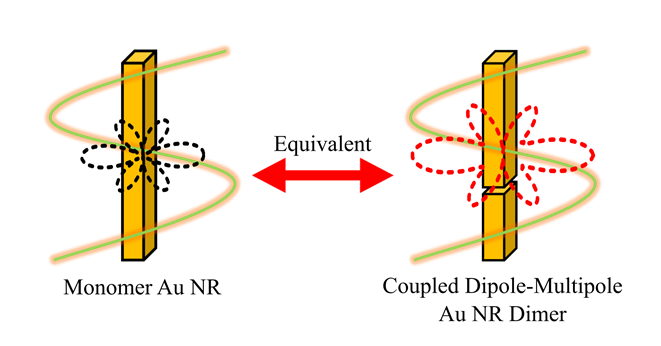
The coupling mode of noble metal plasmon nanoparticles has raised widespread interests in many scientific fields. The coupling of two plasmon nanoparticles into a dimer usually lead to the splitting of their hybridized plasmon. Unlike the radiative bonding mode, the vanishing dipole moment generated by the anti-bonding mode is difficult to detect. Therefore, the dark mode of plasmon, with its non-radiative nature, has been widely used.
Recently, researchers from the Institute of Solid State Physics, Hefei Institutes of physical science, Chinese Academy of Sciences studied the The Mechanism of Surface Plasmon Multipolar Coupled Systems. Their research, published on Journal of Physical Chemistry C, demonstrated that similar to the previously reported dipole-dipole (D-D) coupled system, the plasmonic coupling of dipole-multipole (D-M) also led to red-shifted bonding mode and blue-shifted antibonding mode.
And particularly, the anti-bonding mode is similar to the higher-order mode of multipole of equivalent overall length in the aspect of far-field spectrum, near-field polarizability and electric field distribution.
Researchers also studied the influence of different gap distances on the coupling system, and further evaluated the strength of plasmons hybridization.
"Our research may promote the basic understanding of plasmon coupling systems and bring new opportunities for nanoparticle plasmon applications," said Dr. Xi Min, first author of the paper.
The above research was funded by the National Natural Science Foundation of China and the Key Laboratory Fund of the Ministry of Education.
